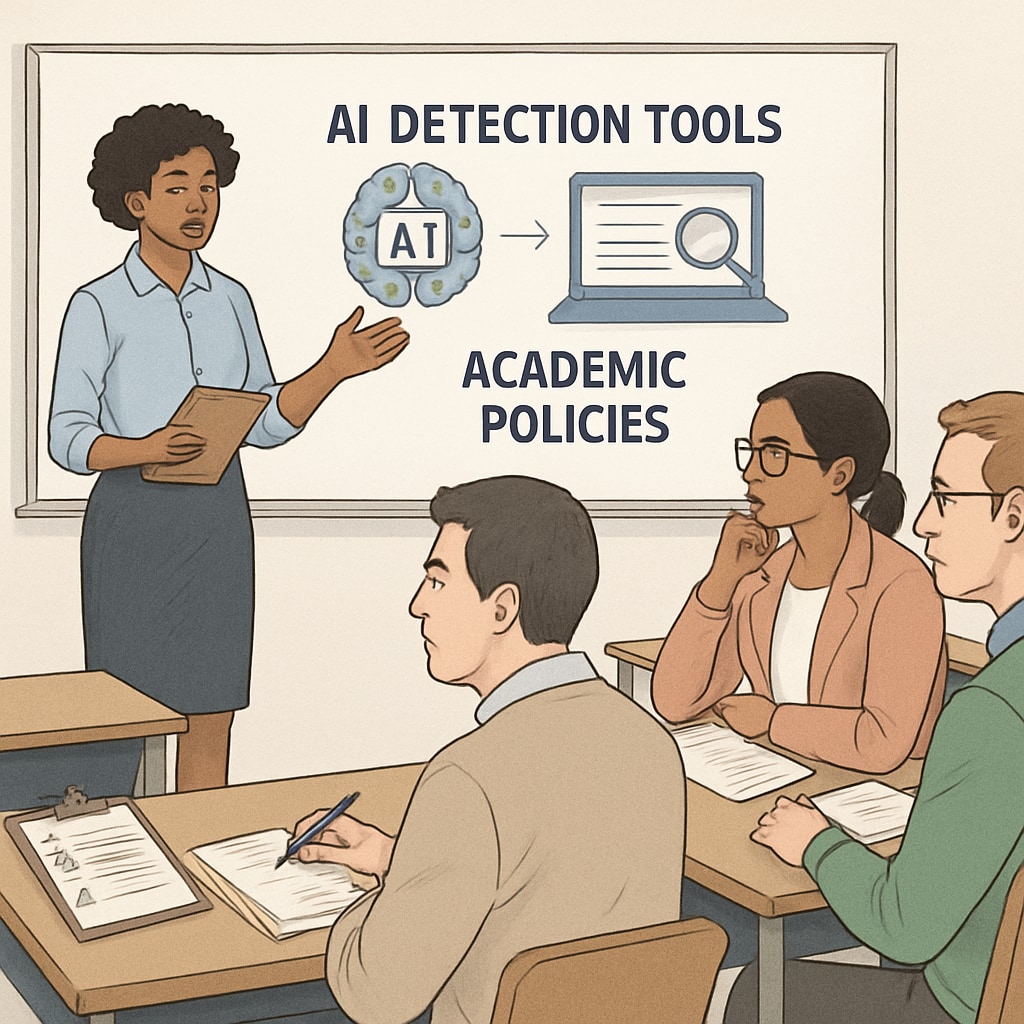The increasing use of AI tools among students has posed significant challenges to academic integrity for educators worldwide. As these technologies become more accessible, traditional methods of evaluating student performance are being tested. This article examines the impact of AI tools on education, the role of detection tools, and how educators can manage these innovations while maintaining a balance between education costs and academic integrity.

Understanding the Impact of AI Tools on Academic Integrity
AI tools, such as ChatGPT, Grammarly, and AI-based content generators, are designed to assist users in generating text, improving grammar, and even creating entire essays. While these tools offer valuable support for learning, they also create opportunities for misuse. For example, students might use AI to complete assignments without engaging with the material, undermining their educational experience.
The challenge lies in distinguishing between legitimate use and misuse. For instance, using AI to proofread an essay differs from generating the essay entirely. Educators must navigate this nuanced landscape to maintain academic integrity while encouraging responsible use of technology.
AI’s impact is particularly pronounced in K-12 education, where younger students may not fully understand the ethical implications of “smart ghostwriting.” This creates a need for schools to invest in both awareness campaigns and detection tools to ensure responsible AI usage.
Strategies for Detecting AI-Assisted Work
To address the rise in AI-assisted academic dishonesty, educators and institutions are turning to specialized detection tools. Platforms like Turnitin and AI Text Classifier have incorporated features to identify content generated by AI. These tools analyze patterns, word choices, and sentence structures to flag potential violations.
However, relying solely on detection tools is not enough. Educators should consider the following strategies:
- Redesigning Assessments: Incorporate oral presentations, in-class writing, and collaborative projects that are less susceptible to AI misuse.
- Promoting Transparency: Encourage students to disclose AI usage and set clear guidelines on what is acceptable.
- Investing in Training: Provide professional development for teachers to recognize and address AI-assisted work.
Detection tools come with their own limitations, including false positives and high costs, which can strain educational budgets. Therefore, educators must strike a balance between using technology and fostering trust in the classroom.

Balancing Education Costs and Educational Goals
One major hurdle in combating AI misuse is the cost associated with detection tools and training programs. Many schools, especially those in low-income areas, operate under tight budgets. Here are some cost-effective solutions:
- Open-Source Tools: Explore free or low-cost AI detection tools available online. For example, tools like GPTZero offer basic functionalities at no cost.
- Collaborative Programs: Partner with universities or tech companies to share resources and expertise.
- Fostering Ethical Awareness: Invest in student workshops on academic integrity, which can reduce reliance on expensive software.
Education costs should not hinder the pursuit of academic integrity. By adopting a combination of technological and non-technological strategies, schools can ensure a fair learning environment without overburdening their budgets.
Looking Ahead: Embracing AI Responsibly
As AI tools continue to evolve, their role in education will only grow. Instead of viewing these technologies as threats, educators should integrate them into their teaching methods. By fostering a culture of ethical AI usage, schools can prepare students for a future where technology and integrity coexist.
Ultimately, the key lies in proactive measures. Schools must adapt their policies, redesign assessments, and educate both teachers and students on the responsible use of AI. With the right balance of innovation and ethical practices, the challenges posed by “smart ghostwriting” can be transformed into opportunities for deeper learning.
For further reading on AI ethics in education, visit Artificial Intelligence on Britannica or Academic Integrity on Wikipedia.
Readability guidance: This article uses short paragraphs, frequent subheadings, and lists to ensure readability. Transition words such as “however” and “for example” help maintain a logical flow. Passive voice is minimized, and sentences are concise for clarity.


